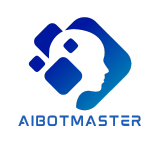Vertex AI is a powerful cloud-based machine learning platform created by Google Cloud. It provides a unified environment to build, train, deploy, and manage ML models across the entire development lifecycle.
Vertex AI streamlines end-to-end ML workflows by integrating key capabilities for data engineering, data science, and ML engineering into a single platform. This enables seamless collaboration between data teams using shared tools and infrastructure.
The platform makes training, deploying, and monitoring machine learning models straightforward. Users can leverage Google Cloud’s advanced infrastructure and services to scale their AI applications. Vertex AI is a comprehensive solution suitable for companies of all sizes looking to harness the predictive power of ML.
Key Capabilities of Vertex AI
Vertex AI offers several key features and options for developing ML models:
AutoML for No-Code Model Building
The AutoML toolkit enables training models with no coding required. Users can upload dataset files and AutoML will automatically preprocess data, train multiple models, tune hyperparameters, and recommend the best performing model.
Custom Training with Preferred Frameworks
For full customization, Vertex AI supports building models with popular ML frameworks like TensorFlow, PyTorch, XGBoost, and scikit-learn. Users can leverage their own code, customize hyperparameters, and integrate preferred tools.
Model Garden to Discover, Test, and Customize Models
The Vertex AI Model Garden provides open-source trained models to easily test drive and customize for your own applications.
Generative AI Access like Text and Image Generation
Pre-built generative AI models for natural language processing and image generation can be leveraged through Vertex AI APIs.
Also Read: Unleash Your Creativity with StarryAI: An In-Depth Guide to AI Art Generation
Walkthrough of Model Building and Deployment
Here is an overview of how Vertex AI facilitates the end-to-end ML project lifecycle:
Data Preparation and Analysis
Vertex AI integrates data storage, processing, and analytics tools like BigQuery, Dataflow, and Looker to handle data preparation and exploration.
Training with AutoML or Custom Code
Flexible training options include user-friendly AutoML experimentation or fully customizable model building with computational resources provisioned through Vertex AI.
Model Evaluation and Iteration
Evaluate model quality through integrated model analysis, validation, and tuning tools. Continuously iterate models for refinement.
Deployment for Predictions
Easily deploy trained models either through online prediction endpoints or batch prediction jobs, leveraging Google Cloud’s networking infrastructure.
Monitoring for Drift and Skew
Monitor your deployed models using Vertex AI tools to detect data or concept drift and training-serving skew, ensuring models remain accurate.
Also Read: The Lucrative Career Path of an AI Engineer: Salaries, Growth, and More
Vertex AI Flexibility
Vertex AI is designed for flexibility across various interfaces and environments:
Python SDK and Other Interfaces
The Vertex AI Python SDK simplifies interacting programmatically with the platform. Other interfaces like web UI, CLI, and notebooks are also available.
Integrated Notebooks and Spark
Managed notebooks with Vertex AI integration provide environments for exploration and Spark integration facilitates big data processing.
Experiments for Comparing Techniques
Vertex AI Experiments enables organized comparison of different modeling techniques side-by-side using clear metrics.
Explainable AI for Model Interpretability
Explainable AI helps provide insights into model predictions to identify biases and increase transparency.
FAQs
Here are answers to some frequently asked questions:
What type of models does Vertex AI support?
A wide variety, including neural networks, random forest, logistic regression, time series, and more for tasks like classification, regression, forecasting, etc.
Can I bring my own data?
Yes, Vertex AI integrates with data storage options like BigQuery, Cloud Storage, and more to access your own datasets.
Is AutoML better than custom coding?
AutoML is great for quickly iterating and comparing models with little coding. Custom code offers more control for tailoring model architectures.
What is the Model Garden?
A repository of pre-trained open-source ML models that can be customized and deployed via Vertex AI.
How can I monitor my deployed models?
Vertex AI Model Monitoring continuously analyzes predictions to detect drift or skew issues and alerts users.
Conclusion
Vertex AI provides a powerful, unified platform to streamline and scale complete machine learning development from data preparation to deployment. By combining AutoML accessibility, customization, and Google Cloud’s advanced resources, Vertex AI enables both data science experts and new users to build impactful AI applications. With robust tools for each ML workflow step, Vertex AI simplifies collaborations between data teams. For any organization seeking to harness the predictive capabilities of AI, Vertex AI is a top choice to launch robust ML projects efficiently.

